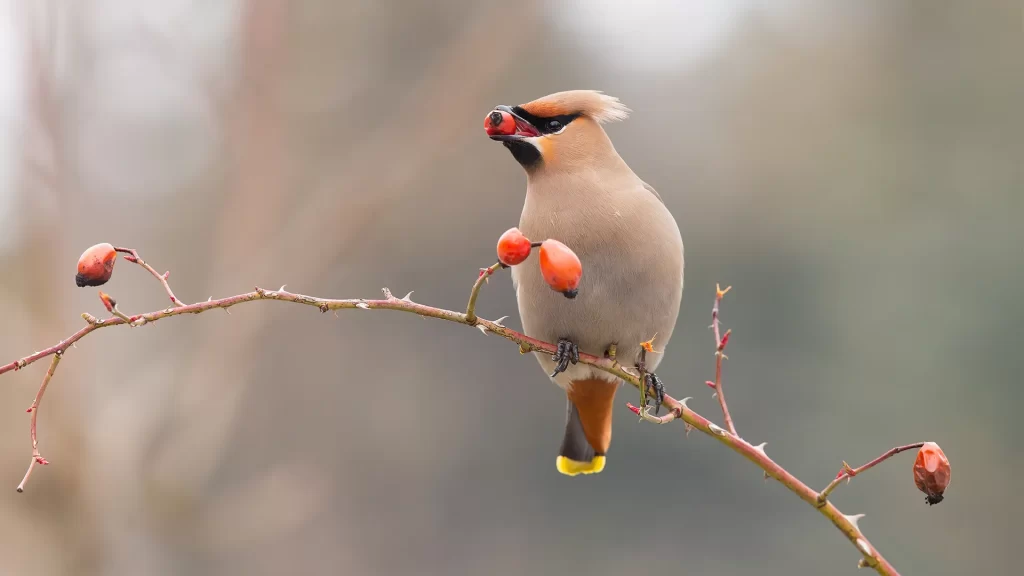Waxwings are sleek birds with striking plumage and a distinctive head crest. Though beautiful they visit many areas sporadically meaning any sighting is a rare occasion for bird watchers.
Features and Habitat
The birds are called waxwings and belong to the genus Bombycilla. They live mostly in the Northern Hemisphere. There are two most well-known species, the Bohemian Waxwing (Bombycilla garrulus) and the Cedar Waxwing (Bombycilla cedrorum). The plumage of this bird is between medium grade, soft, and silky feathers shown to be a miscue mixture of brownish gray-yellow color mixture. The common name of these birds is inspired by their appearance when flying with a folded wing, their wing feathers seem to have waxy red tips.
They favor boreal forests and brushy environments with an abundance of fruit trees/shrubs. Waxwings are fond of berries, which form a large part of their diet. During the breeding, they are furthermore found to eat insects.
Migrations and Rare Sightings
Waxwings are nomadic and irruptive, sometimes acting more like migrators by following sparse resources. During years when berries are scarce in their range, they undergo massive movements, sometimes traveling hundreds of miles to locate food. Such behavior is called an “irruption,” and it causes occasional, unpredictable invasions into areas not normally inhabited by them.
In some locations, waxwing sightings are more uncommon than others, as they rely on the availability of ephemeral food resources. When there are plenty of food sources within their breeding grounds waxwings might not migrate that far which is probably why we don’t see too many elsewhere. However, in years of food shortage, they might expand into new territories delighting bird watchers with surprise visits.
Recent Sightings And How They Made Their Way Here
Observed in parts of Europe over the last couple of years are some impressive irruptions of waxwings. Meanwhile, the UK saw an irruption of these birds in winter 2023-2024. Scotland and England were widely covered, with even reports as far south as Essex. So, there was a sudden increase in number because of bad berry crops within Scandinavia causing waxwings to go further afield for food.
Just as the waxwings showed up in Birmingham and a couple of West Midland counties early next year. Woodland Park seeped these stunning birds in urban settings, where they were reported by birdwatchers as feeders on ornamental berry-bearing trees. Those happenings highlight both the adaptability of the waxwings and how environmental extremes can influence their migratory behavior.
The conservation status and the challenges
Today, waxwings all four species are rated “Least Concern” by conservationists. They are not in immediate danger as their populations are stable. But the near future looks bright, whereas habitat loss and shifts in food availability due to climate change may become problematic. And we still need to know where they are going and what type of environment they require to thrive.
How to Get a Look at Waxwings
If you are itching to spot waxwings, here are some suggestions:
Field identification: – Timing — Waxwings appear mostly in late autumn/early winter, often immediately following the first frosts when berries become abundant.
Where: Anywhere in town where the trees which bear ornamental berries (e.g. rowan, hawthorn, etc.) are but usually the same areas year on year. These are often attracted to the likes of supermarket car parks, parks, and gardens.
Behavior: Waxwings are gregarious and often seen in large flocks. Look and listen for their high-pitched, trilling calls to help find them when not in view.


